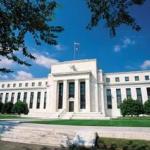
On September 18, the Fed was so sure it had expelled inflation that it cut the federal funds rate for the first time since March 16, 2020. What’s more, the Fed went big. It cut 50 basis points.
The stock market has made hay in the weeks that have followed. Since September 18, the S&P 500 is up over 220 points, and has hit new all-time highs along the way.
This has pushed stocks to extreme valuations. The Buffett indicator, the ratio of total market capitalization over gross domestic product, is now over 200 percent. A fair market valuation is a ratio between 107 and 131 percent. Anything above 155 percent is considered significantly overvalued.
While the Fed’s rate cuts are thrilling for stock market investors – for now – they’re terrible for working Americans who are struggling to make ends meet. In fact, last week’s CPI report showed the Fed may have jumped the gun. Continue reading








